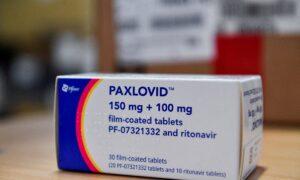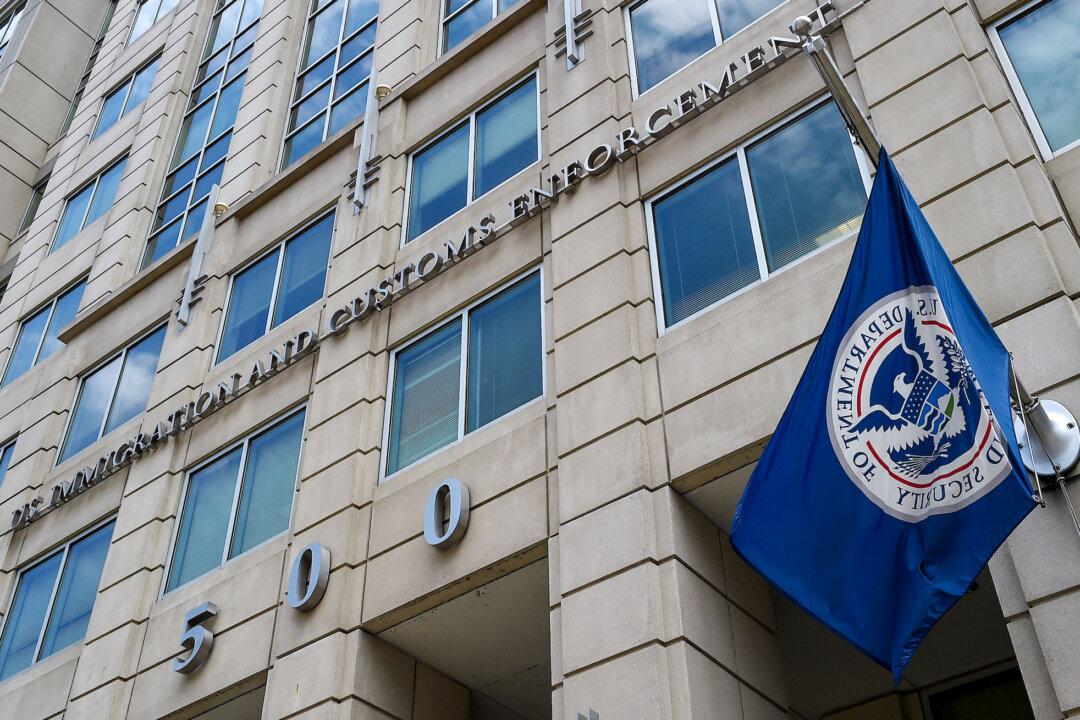Pfizer reported an adjusted loss for the third quarter on Oct. 31 as the drugmaker said sales of its COVID-19 vaccine and antiviral treatment slowed sharply as many Americans seem to have put the pandemic behind them.
Third-quarter revenue was $13.23 billion, down 42 percent from the year-earlier period, due to the decline in sales of its COVID products., the New York-based company said in a statement.
Softer demand led Pfizer to report $1.31 billion in quarterly sales of its COVID-19 vaccine, a drop of 70 percent from a year ago. Meanwhile, sales of Paxlovid, the company’s COVID-19 antiviral pill, tumbled to $202 million, falling 97 percent.
That led to a net loss of $2.38 billion, or 42 cents per share; a year ago, net income was $8.61 billion, or $1.51 per share.
Adjusted income, another measure of profitability, was negative $968 million in the third quarter, after a $10.2 billion profit a year ago.
Pfizer also recorded a $5.6 billion charge for inventory write-offs because of declining demand for its COVID-19 products.

The hit to Pfizer’s bottom line comes as the COVID-19 public-health emergency in the United States ended in May and many Americans consider the pandemic—as well as the various restrictions on business and movement that accompanied it—as consigned to the dustbin of history.
Even as new strains of the virus continue to circulate, infections and hospitalizations remain well below their peak levels, with demand waning for various COVID-19 products.
Recent data show that vaccine uptake appears to be relatively slow this season. About 10 million people, or roughly 3 percent of Americans, have received a dose of the latest COVID-19 booster.
“We have rebased our COVID expectations,” Pfizer CEO Albert Bourla said on a call with investors to discuss the quarterly results.

More Details
Several weeks ago, Pfizer warned that sales of its COVID-19 products were weaker than expected, prompting the company to cut its annual revenue expectations by $9 billion.In guidance released on Oct. 13, Pfizer said that it was expecting full-year 2023 sales of $58 billion to $61 billion, down from the previous forecast of $67 billion to $70 billion.
The revenue outlook was slashed, Pfizer said at the time, “solely due to its COVID products” such as its vaccine and antiviral drug.
In its Oct. 31 earnings statement, Pfizer reaffirmed the guidance that it provided on Oct. 13, saying it was encouraged by expected revenue contributions from new non-COVID products.
“With expected contributions from our new product launches, this puts us squarely on track to meet our full-year non-COVID operational revenue growth target of 6% to 8%,” Pfizer CFO David Denton said in a statement.
The company’s earnings report showed that, not counting COVID-19 vaccines and treatments, sales were up 10 percent in the third quarter, largely on the back of the company’s two new vaccines: one for the respiratory syncytial virus and the other for the prevention of pneumococcal disease.
“Pfizer is looking to counteract this loss in their vaccine market by focusing on new launches including Abrysvo and Prevnar 20,” Citeline analyst Zhyar Said told Investor’s Business Daily. “Though these two products have already driven Pfizer’s non-COVID product sales by 10 percent, this margin was not enough to make up for the 41 percent drop [in] COVID [product] sales.”
Mr. Denton said that, besides the expected revenue contributions from the two non-COVID vaccine products, Pfizer is also pressing ahead with a cost-cutting initiative worth billions of dollars.
“We are extremely pleased by the strong 10% operational revenue growth of Pfizer’s non-COVID products in the third quarter of 2023,” he said.
“In addition, we launched our cost realignment program, from which we expect to achieve at least $3.5 billion of net cost savings by the end of 2024.
Pfizer Shares Take a Hit
While the earnings report initially sent Pfizer stock down by about 1 percent, the share price rebounded to close little changed. Still, Pfizer stock remains down by roughly 40 percent this year.Over the past two years, sales of Paxlovid and Pfizer’s COVID-19 vaccine boosted revenue to record levels. But as population-wide immunity levels have increased, annual vaccination rates have dropped sharply and demand for treatments has also fallen.
During the pandemic and after, Pfizer introduced its widely used mRNA vaccine, sending its shares on an upward trajectory.
In mid-December 2021, Pfizer stock peaked at about $59 per share, but as of Oct. 31, 2023, it was trading at about $30 per share.
“The weakening demand for the vaccine and Paxlovid goes to show this really is the transition to post-COVID,” Max Nisen, an analyst at Bloomberg Intelligence, told Bloomberg.
“People are going to have to figure out what that looks like well beyond Pfizer.”







